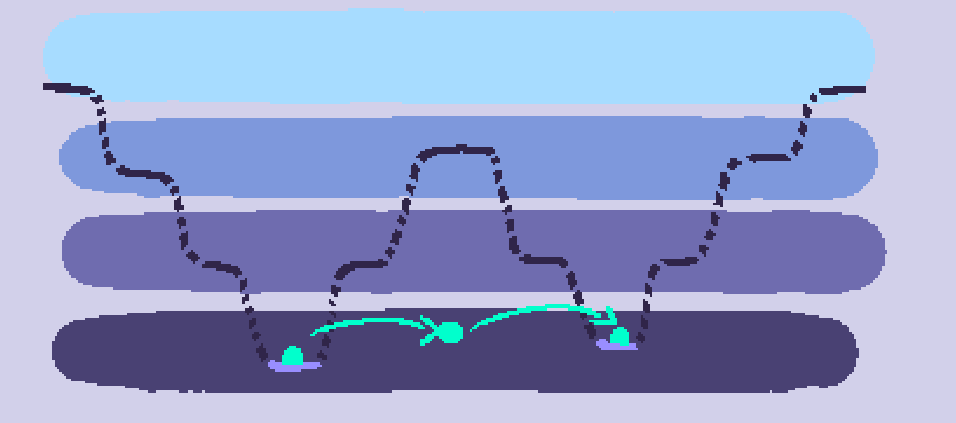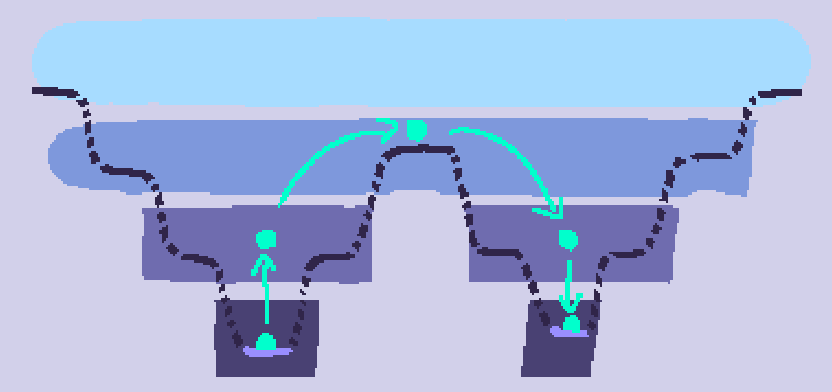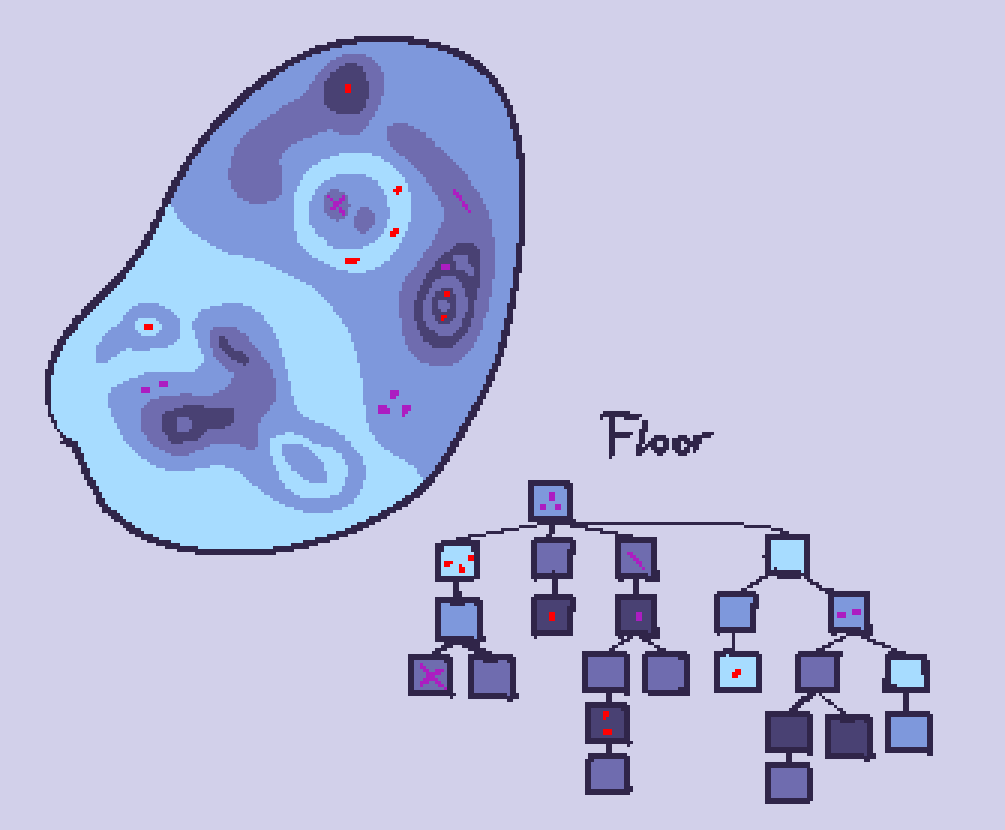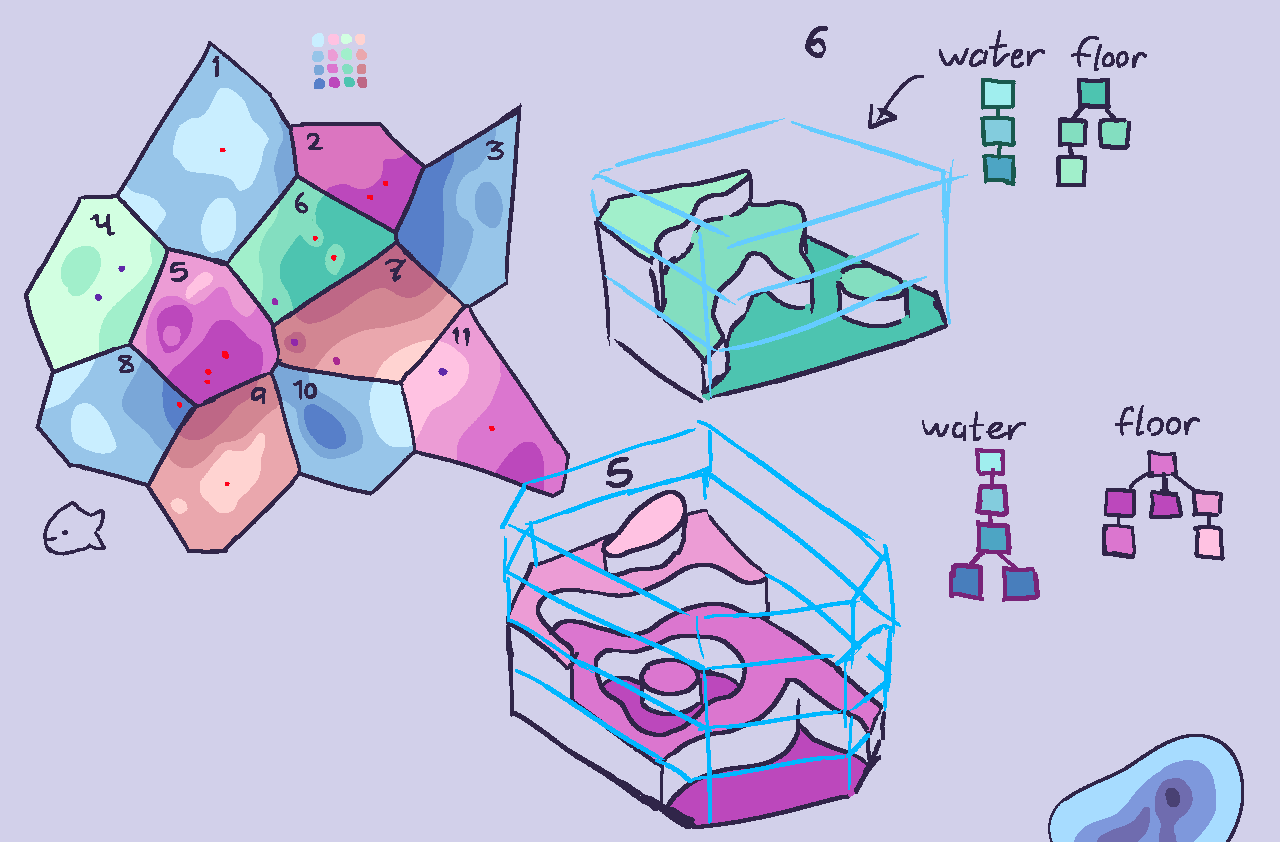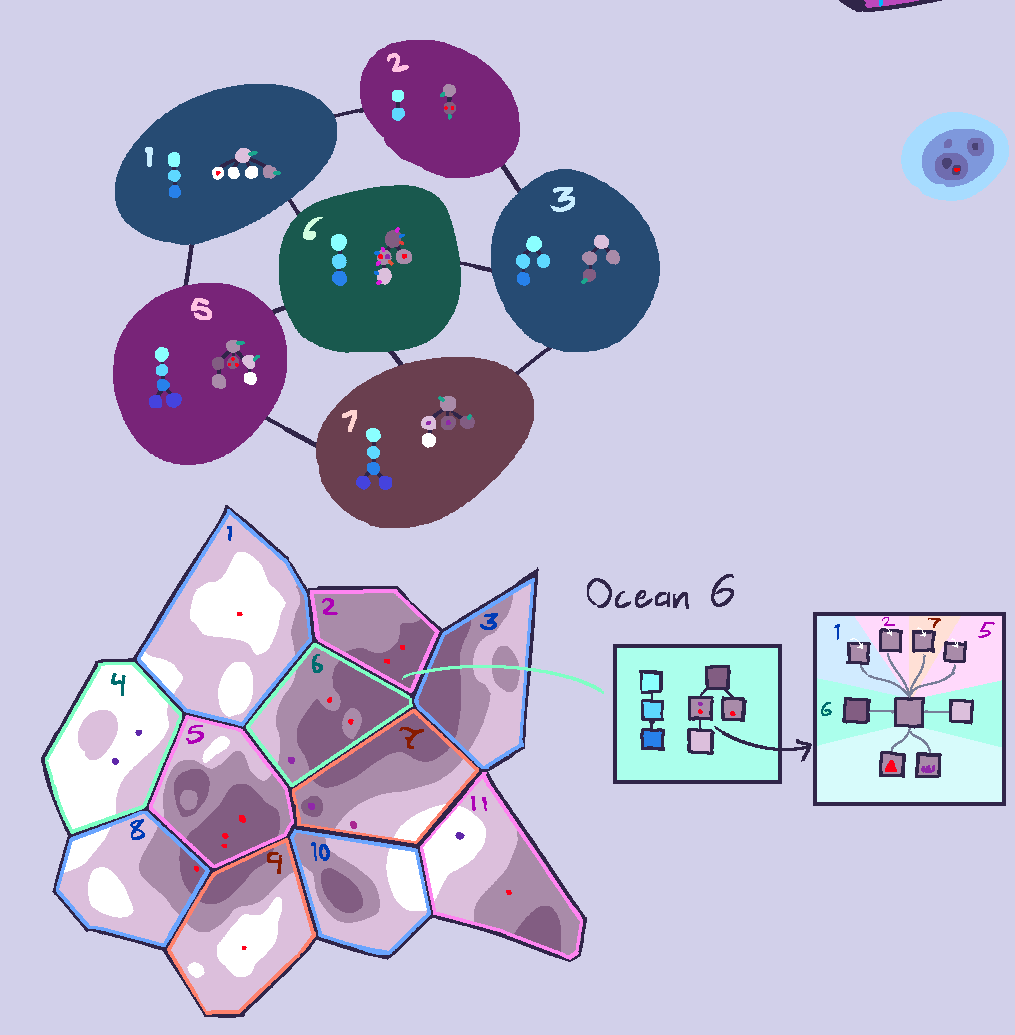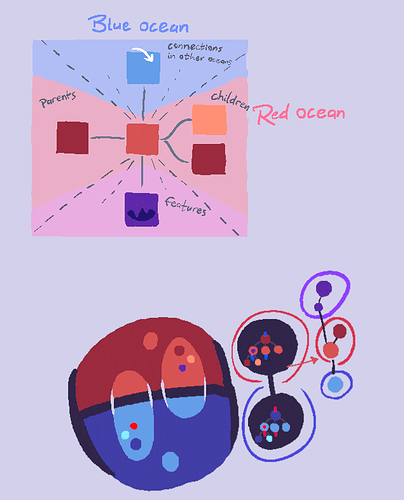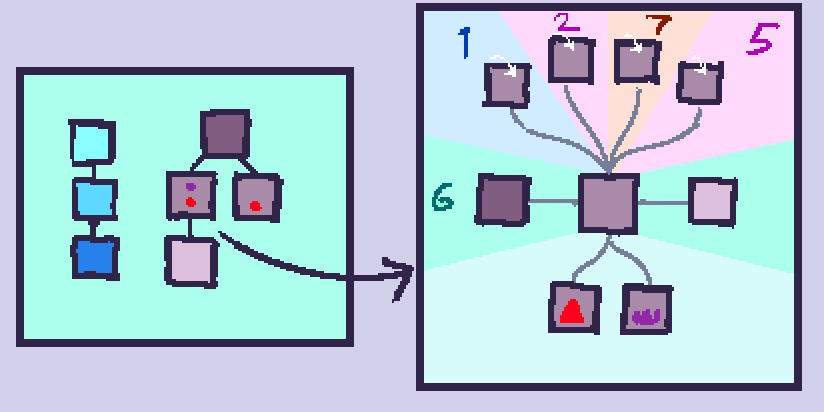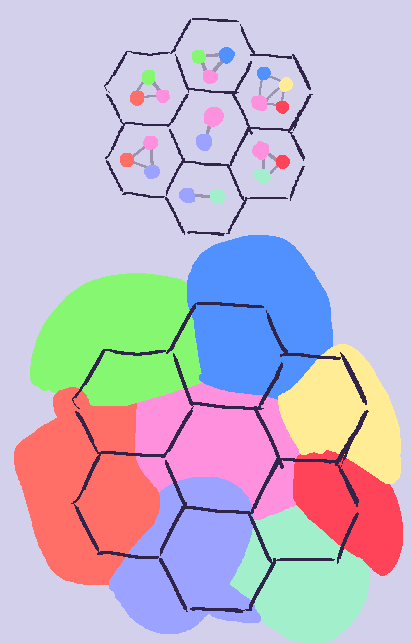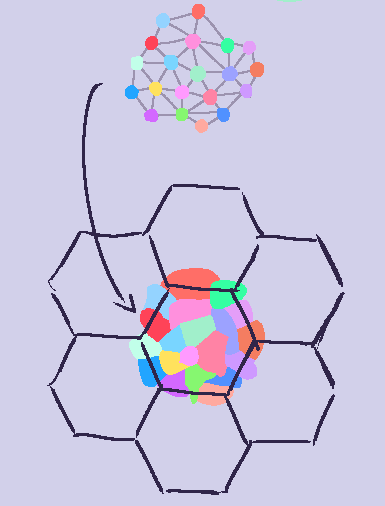Thought about this a bit more.
So, first of all, as a friend of mine pointed out, I’m doing a lot of complicated stuff in order to both accurately and digestibly convey all the ways all the different patches in a randomly generated world connect with each other. It feels like a lot of work on something that might be confusing to players because an actual visual map would be several times more intuitive.
However, that very much goes against the theme of discovery we’ve been wanting. being able to see your planet’s geography immediately ruins the process of slowly mapping it out in the society stage, or finally getting a clear picture of it when the planet is photographed in the space stage. But an actual map is so much easier in so many ways. Maybe a way of displaying it so symbolically/abstractly that it’s hard for the player to actually see what their planet looks like until those later stages where it’s “colored in”? I have no idea how that would look though.
Anyway, with all that said, here a few more concepts I’ve done in the past few days. This is all based on a series of lengthy posts I made in the discord yesterday, but actually since I haven’t really updated this thread with my ideas lately I’ll include stuff from earlier.
This is a “chunk” of ocean, made up of water and floor patches. (previously i’ve just been calling them “oceans,” but that’s a bit misleading. chunks might not be a good name either but I’ll use that for now) All the water on a planet would be divided into some number of these in order to organize the patches instead of leaving them a jumbled, world-spanning mess. Each chunk is made up of both a network of water and floor patches.
The water patches are organized by depth, starting with a single epipelagic patch at the top. As the topography of the ocean lowers in multiple places, creating holes, the water patches “fork.” (e.g.: one mesopelagic patch for the one mesopelagic hole, three bathypelagic patches for the three bathypelagic holes, and then some more abyssopelagic patches for the abyssopelagic depressions in two of the bathypelagic holes. This is done because, for example, if there were just one patch for each water depth in a chunk like this, it would be possible to be situated on the floor of an abyssopelagic pit, swim up into the abyssal water, and then teleport to another abyssopelagic pit, even if they’re divided by much higher terrain.
Meanwhile the floor patches are organized via a sort of hierarchy system:
floor patches can have a single parent (a patch, plus or minus one depth, which surrounds them entirely) and multiple children (patches, plus or minus one depth, which they surround entirely). The resulting tree of patches can be a little confusing since it’s not vertically sorted by depth like the one for water, but I’m not sure if a hierarchy tree sorted by depth would work in all cases.
Also I haven’t really thought of a way to show which water patches connect to which floor patches.
Here’s a bunch of chunks, with two of them rendered in high quality 3d, alongside some blue outlines for all the water depths, plus the water and floor trees.
Here’s the same group but with more uniform colors, and a zoom-in on a certain patch in a certain chunk
Some more elaboration on the zoom-in in the last image; it’s a way to show a selected patch’s connections, including those in other chunks.
The patch in the center is the selected one, and its parents and children are to the left and right, respectively. Any features (vents, caves, tidepools, etc.) are to the bottom – features are somewhat “contained” within their respective patches, though features like cave entrances may link to the main “body” of their cave, which exists disconnected in a void because it may connect to entrances potentially all over the world. (need to think about patch distances btw)
At the top are all of the directly adjacent patches (same depth) that are located in other oceans.
Finally, I thought about how chunks would work with the planet grid, and how big they’d be in general.
If chunks are larger than the cells on the grid, and a patch or a feature (like a vent) in a selected chunk is located in a part that’s in a different cell, does it show up? can it be traveled to? Does this question matter at all
Also, for individual chunks, how big should they be? large enough that there’s only a few per world, and they mostly serve the role as oceans? Or smaller, so the topography each represents is simpler? If they’re smaller, that means more ocean patches overall, which might get overwhelming. However patches too large means there won’t be much diversity among large sections of the ocean (assuming all patches are homogeneous)

